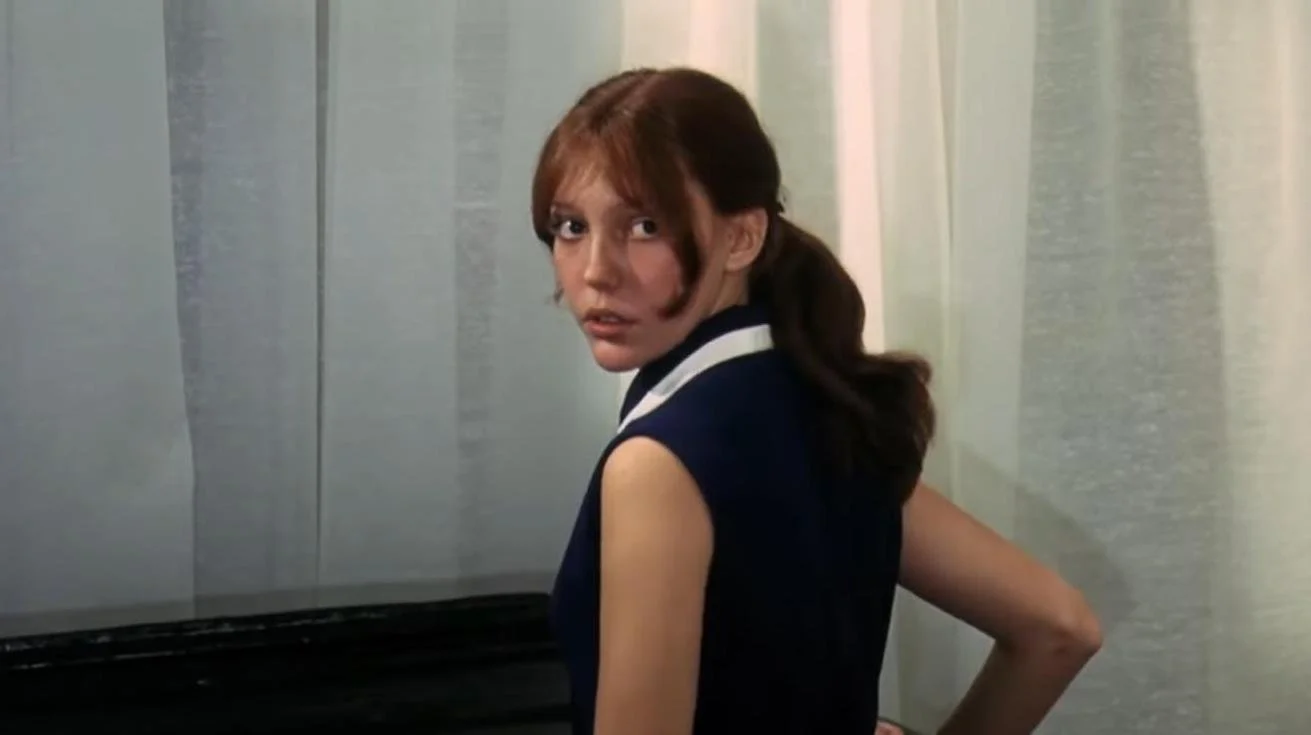Mona Gutheil
Investigating how our attention, as the most valuable commodity in the current media-filtered landscape, occupies the center of the economic stage, Monamobile’s debut collection „You wont believe“ is at the same time a fitting representation of late capitalism and a parody of it. With each garment being wearable in at least two different ways, the collection presents a performative element that mimics the post-truth regime we live in today.Repurposed gadgets and gimmicks are a constant feature in the accessories portion of the collection, exploring how displacement and recontextualization: the distinction between function and dysfunction can be easily blurred.
Hello Mona, how would you introduce yourself to Coeval’s community?
Hello, my name is Mona Gutheil - Monamobile - and I am currently finishing my Bachelor‘s Degree in Fashion Design at the University of the Arts in Berlin. My starting point is always a mobile object and the reference clothing associated with it. All my designs are multifunctional as well as transformable and can therefore be worn in at least two ways - with and without the object. This also creates a performative level.
You’re now launching your label with a project titled “You wont believe”. Where does this disbelief come from?
“You wont believe“ is probably one of the best-known clickbait slogans for the most valuable commodity in the all-dominant media landscape - our attention. Unlike money and material goods, attention can neither be saved nor increased. It is limited - and that makes it incredibly valuable. To visualise the theme „You wont believe“, I could not have imagined anyone more fitting to collaborate on the visuals than Sara & Ines, whose surrealist work blurs the line between photography and digital painting and leaving room to imagine..
Your collection investigates how our attention, as the most valuable commodity in the current media-filtered landscape, is constantly contended between different players trying to monetize it: what role does fashion play in this economic model?
Significantly, fashion has partly evolved into fast fashion as a result of consumer culture and capitalism. Fast fashion is seen as a key strategy for the success of modern clothing retailers. This is because they are constantly renewing their product range and enticing customers with cheap offers to attract the attention of the masses. As a result, the industry is no longer focussing solely on a price war, but also on reacting more quickly to changing fashion trends and consumer demand. However, showpieces and influencers are often used to generate media attention in the higher-price segment.
Fast fashion‘s seasonal system concerns me as it accelerates the pace at which products lose their value. In response, I aim to deliberately manipulate attention through my work, prompting viewers to confront societal issues. Each object I incorporate represents social criticism and satire on our consumeristic culture.
Your collection displays a performative level thanks to the multifunctional and transformable nature of the garments which can be worn in several ways. Does this aspect relate to our post-truth regime where no univocal interpretation is sustainable?
Exactly. Due to the transformability as well as the performative level, there is a lot of room for interpretation therefore not just one single “truth”. It more readily depends on the point of view the recipients are seeing their “individual truth”. Furthermore, in the post-factual age, the key to success is not the claim to truth in general, but the confrontation with the subjective, perceived truth instead. Algorithms are designed to deliver personalized content to reinforce the consumer’s preferences and interests. Filter bubbles are created, causing people only to see content that later confirms their opinions and beliefs. As a result, there is a truth constructed, promoting polarization and division and reinforcing stereotypes, influencing the individual, subjective truth. On the whole, it is about how our attention is seemingly unintentionally followed and guided by the tricks and deception of the media landscape.
What role do accessories play in the collection?
My accessories often feature repurposed gadgets or gimmicks. I always had an interest in exploring the field between function and dysfunction. It is incredibly exciting, as on the one hand, gadgets promise a function, but actually, they are superfluous after a few times of use. I find it fascinating to put them in a different context and therefore give them back their intended value.
How do you see the project evolving?
As designers, we have a huge responsibility, as we create new objects or garments and bring them into the world. That‘s why, in my opinion, especially my work only has a right to exist if it is innovative, has a purpose and consists to a large extent of reused and second-hand items and materials. I aim to turn my BA collection into an ongoing rather timeless project, which is not dependent on a collection thinking or a season and doesn‘t have an expiration date. I am more interested in realising one product per month which continuously builds on a bigger picture of my vision ideally showing more and more of Monamobile.
Images courtesy of MONAMOBILE
creative direction MONA GUTHEIL SARA BASTAI INES MAESTRE
design MONA GUTHEIL
photography SARA BASTAI
photography assistant KAROLINE KVECK
digital painting INES MAESTRE
hair REIYA YAMAOKA
makeup FLORINA VYAS
nails CAMILLA INGE VOLBERT
helping hands MALLKI GARAFFA EMILIA STAUN EMILY ZANON LENARD SCHNITZLER
talents JANIS SIAMINOS VIA MAIJN SCOUTING, IVY LEUS via MAIJN SCOUTING, DU GOMES via MAIJN SCOUTING, ASTA SEMRAU via MAIJN SCOUTING, PIA AHMED via IZAIO MANAGEMENT, MARGOT HEYER via NEU CASTING, SORIN MOERBECK via NEU CASTING, ALBENA RADZUHN via INDEED MODELS
interview by DAVIDE ANDREATTA
What to read next












